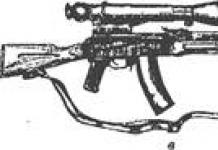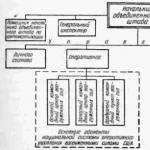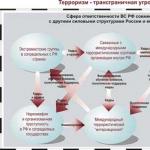The design feature of ball valves is the use of ball bearings (ball in trunnions). This design allows you to reduce the moment when opening a ball valve made of polyethylene at large pressure drops in gas distribution and water supply systems. When using a stem extension, it is possible to install the ball valve into the ground without a well, and for a wellless installation, a carpet and a base plate under the carpet are used to provide access to the valve control on the surface.
Ball valves are not inferior in performance and quality to metal ball valves, and in some characteristics even surpass them. Polyethylene ball valves manufactured by Polyvalve - Andronaco, Polytec, Frialen, Georg Fischer (+GF+), Daeyoun, FOX.
PE ball valves are of high quality, excellent performance and performance.You can buy HDPE ball valves by contacting our company, polyethylene ball valves are always available in our warehouse. We offer to buy ball valves from different (European and Korean) manufacturers at low prices.
|
Table of materials Ball valve PE100 SDR11 |
||
| № | Component | Material |
| 1 | Frame | PE - polyethylene |
| 2 | Branch pipes | PE-polyethylene |
| 3 | Ball | PP - polypropylene |
| 4 | ball seal | NBR - rubber |
| 5 | Retaining ring | PP - polypropylene |
| 6 | Bearing | Acetal |
| 7 | Adapter | PP - polypropylene |
| 8 | stem seal | NBR - rubber |
| 9 | Adapter seal | NBR - rubber |
Ball valves PND
| General information for gas and water | ||
| Information | For Gas | For Water |
| materials | PE100 | PE100 |
|
Maximum working pressure |
10 bar (1 MPa) | 16 bar (1.6 MPa) |
|
Pace. range |
-29 to + 60 C | -29 to + 60С |
|
Method connections |
welded welded with sleeve |
welded welded with sleeve |
| Pass type | ||
| stem type |
short elongated |
Short elongated |
|
Standard Ratio dimensions |
SDR11 | SDR11 |
Competitive advantages of PE ball valves.
- Passed certification "GAZCERT"
- HDPE ball valves comply with international standards
- Underground wellless installation in the ground of PE ball valves
- Open/Close 1/4 turn
- Polyethylene taps are not subject to corrosion
- There are modifications of PE taps with purge
- Coupling and electrofusion (reducing) connection
- Safety of HDPE materials
- Do not require repair for the entire life of the HDPE pipeline
- Warranty period 2 years
Ball valves made of PE100 SDR11 polyethylene, the best offer on the market for ball valves for gas distribution and water supply systems. We ship HDPE ball valves and extension stems to them in all regions of Russia and the CIS countries.
PE ball valves have all necessary documents
| Name | Diameter |
*Price RUB |
| 25mm | from 3 499.00 rub. | |
| 32mm | from 3 499.00 rub. | |
| 40mm | from 4 999.00 rub. | |
| 50mm | from 6 199.00 rub. | |
| 63mm | from 7 499.00 rub. | |
| 90mm | from 12 990.00 rub. | |
| Polyethylene ball valve d110 | 110mm | from 12 990.00 rub. |
| Polyethylene ball valve d125 | 125mm | from 16 990.00 rub. |
| Polyethylene ball valve d160 | 160mm | from 33 999.00 rub. |
| Polyethylene ball valve d180 | 180mm | from 39 999.00 rub. |
| Polyethylene ball valve d200 | 200mm | from 54 999.00 rub. |
| 225mm | from 89 990.00 rub. | |
| Polyethylene ball valve d225mechanical gearbox | 225mm | from RUB 99,990.00 |
| Polyethylene ball valve d250mechanical gearbox | 250mm | from 199 990,00 rub. |
| Polyethylene ball valve d280 mechanical gearbox | 280mm | from 229 990.00 rub. |
| Polyethylene ball valve d315 full bore mechanical gearbox |
315mm | from 339,990.00 rub. |
| Polyethylene ball valve d355mechanical gearbox | 355mm | from 399,990.00 rub. |
| Polyethylene ball valve d400mechanical gearbox | 400mm | from 499 990.00 rub. |
| Polyethylene ball valve d630mechanical gearbox | 630mm | on request |
| Drive rod (telescopic rod) | L=1.2-2 m. | from 2 999.00 rub |
| T-key | L=1.2 m. | 1 500.00 rub |
Prices for HDPE ball valves
* The price for PE ball valves is indicated including VAT at the exchange rate of the Central Bank on 04/01/2017. on special terms of purchase. In accordance with the commercial policy of the company, the sale price may vary. The exact calculation of prices for HDPE ball valves is made on the basis of the client's application and is reflected in the invoice for payment. It is not a public offer.
*** Conditions of free delivery of HDPE valves: delivery is carried out to the nearest terminal of the transport company to the customer, with 100% prepayment of the cost of ordering HDPE ball valves in the amount of more than 100,000 (one hundred thousand) rubles. MOVE reserves the right to choose a transport company. Terms and order of delivery are negotiated separately. The conditions of free delivery apply to transportation up to 3000 km, when transporting more than 3000 km. MOVE reserves the right to partially compensate the customer for the cost of transportation.
For cooperation and additional discounts, please contact the company.
You can buy PE ball valves in our company on the most favorable terms, every client is important to us!
Components of PND ball valves.
stocks
Ball Valves
Today, in the infrastructure of each settlement - small in population, medium or, conversely, large, there is a huge number of pipelines for various purposes. The use of polymer pipes for the installation of water supply and gas networks greatly simplifies the maintenance of the entire system and its individual sections, and also increases their service life. To regulate the medium flow and control the efficiency of the system on underground polymer networks, fittings made of appropriate materials are used - PE ball valves.
The convenience of using this type of reinforcement lies in the fact that its installation is carried out in a well-free way. To install a ball valve on a network, it is not necessary to equip a well; after installation on a network, it is enough to cover the valve with soil, bringing the control mechanism to the surface. These products are currently produced by many companies, both domestic and foreign, and their use is justified. The use of polyethylene ball valves allows you to quickly solve various technical problems, providing a reliable blocking of the flow of the medium flowing through the pipeline.
Underground pipelines are laid at various depths, however, in the Russian climate, many networks require a sufficiently deep occurrence of pipes - below the freezing point. In connection with the peculiarities of the installation of networks, the question of ease of access to the fittings installed on the network arises. Each polyethylene (HDPE) ball valve must be controlled at all times, regardless of its installation depth.
To do this, various types of control devices are used, in particular, rods and spindles of fixed and telescopic length, which are brought to the surface and serve to control pipeline equipment and its preventive maintenance.
In addition to facilitating the control of underground laying devices, spindles and rods extend their service life, since they take on part of the driving load on the opening-closing mechanism. For the safety of the device and control mechanisms, it is customary to place a ball valve under the carpet. The installation of cranes under carpets is used in cases where the valve locations are located under the roadway or in other dangerous conditions. Manholes are also used as a protective means for underground installation fittings. Unlike carpets, hatches are flush with the surface of the ground or pavement.
The use of a polyethylene crane in an underground version has a number of advantages in comparison with other types of fittings. First of all, the ball valve PE (HDPE) is compact and easy to operate. Its installation on the network is carried out by butt or electrofusion welding.
To speed up and facilitate the installation of cranes on the network, cranes are produced with built-in metal embedded heaters. During the welding process, they melt the polyethylene and connect the fittings to the pipes. Many manufacturers also equip their products with welding indicators - special marks that simplify the work of welding operators.
Today, HDPE ball valves for polymer networks can have a different design. Products made entirely of polyethylene are in great demand. They are distinguished by strength, durability, complete resistance to corrosion, and the material of manufacture allows them to maintain elasticity, which makes them resistant to mechanical stress.
A polyethylene shut-off valve with a ball valve has several basic elements in its design - a body and, in fact, a ball valve. The spherical valve has a hole of a certain diameter through which the transported medium passes freely in the open position of the device.

Shut-off ball valves can be full-bore and non-full-bore. The first option is more common: for such valves, the diameter of the conditional passage coincides with the diameter of the internal passage of the pipe. Full bore polyethylene ball valves are more efficient because they do not reduce network throughput.
In order to close the valve, it is necessary to rotate the control mechanism - the handle, spindle, stem, lever by 90 degrees. The shutter rotates and blocks the medium flow. To ensure that the structure is completely sealed when closed, the ball valve and the control mechanism have seals in the form of plugs, gaskets and rings. In addition, in its design, the PE crane can use pressure disc springs for additional fixation of the shutter.
The use of ball valves on polymer networks is beneficial and convenient. Most products are made of low-pressure polyethylene grades PE 100 and PE 80. This is a durable material that is well connected to polymer pipes during welding. In addition, a polyethylene underground crane compares favorably with metal gates and gate valves - it is easier to manage, and its weight is much less.
Light weight is a lot of advantages: ease of transportation, ease of installation, insignificant loads on the pipeline.
Installation of the device on a network of plastic pipes of small diameters does not require the use of additional supports and fixation, unlike taps with metal elements in the design.
Polyethylene is resistant to electrochemical corrosion, which is especially important for fittings on gas pipeline networks. The material resists corrosion well, resists aggressive soils. The polyethylene ball valve installed on the water supply network retains its operational characteristics for a long time.
The average service life of the device is from 15 to 25 years, while all maintenance consists of a single annual opening and closing of the shutter.
The internal parts of the device are not subject to the formation of lime deposits and sediments. Polyethylene stop valves can be used in drinking water supply networks, as they comply with accepted hygienic and sanitary standards and parameters. The use of polyethylene ball valves on most gas and water supply networks allows you to save money on laying and equipping the network, while maintaining its efficiency and safety of operation.
Germes LLC is the exclusive representative of the Daeyoun [Deyon] plant and supplies to Russia polyethylene ball valves SDR11 of this manufacturer, as well as telescopic extensions for them.
General characteristics of polyethylene ball valves:
- The DEEN ball valve (Daeyoun) is designed to control the flow of the medium (open / close) through the pipeline by turning the shut-off body by 90 degrees.
- Temperature range From -29 to 600C
- All plastic construction for maximum corrosion resistance. The ovality of the ball does not exceed 30㎛.
- The valve is completely made by welding from HDPE without the use of any adapters for other materials or flange connections.
- The presence of a support bearing in the center of the bottom, which ensures smooth sliding of the ball inside the crane (there is no displacement of the ball).
- The presence of a special non-freezing lubricant on the ball.
- The presence of three sealing rings installed between the bearing and the housing, which increase the level of tightness.
- The presence of a sealing ring installed between the adapter and the body prevents soil and dust from entering the inside of the valve.
- The presence of a pin between the adapter and the bearing securely fixes the valve ball during its opening and closing.
- 1/4 turn opening/closing. If the valves are equipped with a mechanical gearbox 2 ½ turns.
- The length of the pipe is designed for two weldings.
- The crane is maintenance-free and is controlled by a rod.
- The adapter is made of injection molded polypropylene. At the bottom of the adapter there is a locking device that prevents rotation more than 90°. An o-ring is inserted inside the adapter, which prevents foreign particles from entering.
- Corrosion protection measures are not required.
- There is no need to install any containment chamber or well around the tap, it can be buried with the same material as the rest of the pipeline.
- The production is certified according to ISO 9001 and JIS Q 9001.
- Wide range of product sizes (from 20 mm to 400 mm).
- Warranty period 2 years.
- Warranty period of storage (provided that the tightness of the original packaging is maintained) is 10 years.
- Operated with a telescopic rod.
Technical characteristics of polyethylene ball valves:
 |
Type and application |
Underground installation (for gas 10 bar/water 16 bar) |
|
Material |
PE80/PE100, PE2406/PE3408 |
|
|
Opening / closing |
¼ turn |
|
|
Temperature |
From -29 to 600C |
|
|
Pass type |
full bore |
|
|
Auxiliary stem type |
Telescopic extension |
|
|
Purge type |
No purges, 1 purge, 2 purges |
|
|
Body and socket welding |
Electric welding or coupling |
|
|
Test standards |
EN 1555, ANSI/ASTM B16. 40 |
Construction of polyethylene ball valves:
Dimensional and mass characteristics of polyethylene ball valves:
| Standard PE Ball Valves |
ISO diameter (mm) |
|
 |
||
|
315 (Full bore) |
||
| PE ball valves without purge (ISO) |
ISO diameter (mm) |
Note |
 |
||
| With mechanical gear | ||
|
315 (Full bore) |
||
| PE Single Purge Ball Valves (ISO) |
ISO diameter (mm) |
Note |
 |
Without mechanical gear | |
| With mechanical gear | ||
|
315 (Full bore) |
||
| Type Standard (NPC) | |||||
 |
Full bore polyethylene ball valves for gas made of PE 100 (PE 100) with a nominal section: 25/32-200/225 mm. PN 10, SDR 11 | DN, mm | The weight, kg/pcs |
Construction length, mm |
|
All-welded ball valves with elongated stem- shut-off valves designed for underground pipelines. Underground ball valves are manufactured with a nominal diameter (DN) from 15 to 500 with a stem outlet under the carpet and the possibility of extending the stem from 1,000 to 4,500 mm, designed for working pressure (PN) 16 and 25.
The underground method of laying main pipelines is today considered one of the most appropriate. However, it requires the use of a special type of valves, and the most suitable for this purpose are underground ball valves with extended stem.
These products have small overall dimensions and weight, the body design underground ball valves eliminates any contact of the internal parts of the cranes with the soil. Most often used for underground installation all-welded ball valves, allowing to minimize the leakage of the working medium through the valve body. The main type of connection to the pipeline underground valves with extended stem- for welding, which provides maximum tightness and durability of the connection.
In order to protect the valves from mechanical damage and soil impact, an additional protective coating of the body of ball valves is carried out. The covering happens various types - FRUSIS, BIURS.
For the purpose of management underground ball valves their design includes stem extensions that connect the ball to the control located above the ground.
The height of the stem extension can be any according to the requirements of the customers. Extensions come in standard lengths from 1000 to 4500 mm, as well as adjustable height, the so-called telescopic rods.
For management underground cranes pneumatic or pneumohydraulic actuators are used. Drives are controlled by the transported medium.
The crane spherical polyethylene is used at construction of systems of gas supply and water supply. PND ball valves can be installed both in wells / chambers, and there is a variant of installation without a well, while the crane for underground installation is equipped with a telescopic extension, and the extension rod is brought out under the cover of the above-ground carpet.
As a rule, polyethylene ball valves are produced with diameters from 32 mm to 315 mm.
Working pressure: gas - up to 10 bar., water - up to 16 bar.
A polyethylene ball valve is connected to a HDPE pipe either by electrofusion fittings or by butt welding.
We offer ball valves from Georg Fischer, Plastitalia, Polyvalve and Frialen.
SPECIAL OFFER for HDPE ball valves
Frialen and Polyvelve polyethylene ball valves for water and gas supply at special prices!
d 110 mm - RUB 15,000.00
d 160 mm - RUB 29,000.00
We can complete the HDPE ball valve with the following accessories:
- Telescopic extension for crane;
- Key for PND ball valve;
- Extension for the key of the HDPE ball valve in a protective casing.
The telescopic extension is designed to open or close the PE ball valve.
Structural version of the extension:
- axis, which is made of metal;
- protective casing made of polyethylene, to protect the metal part of the crane from corrosion.
The key for the ball valve is made of polyvinyl chloride (PVC) in the form of a hexagon.
The polyethylene crane was originally invented for the construction of gas networks, but today a polyethylene crane is actively used in the construction of water supply networks. Often a polyethylene faucet is used as a replacement for conventional valves, since a polyethylene faucet is easier and cheaper to install than a valve.
On HDPE pipelines, a collapsible PE crane is also used, which is connected to HDPE pipes with a collet clamp, otherwise it is called a compression valve. Do not confuse these products. The compression faucet can only be used on plumbing and such faucets are only available up to 110 mm in diameter. In this section, we present a HDPE crane, which can also be used on gas pipelines. Such a HDPE faucet can withstand a working pressure of up to 16 atmospheres on a water supply system, and a polyethylene gas faucet can withstand up to 12 atmospheres of pressure.


















